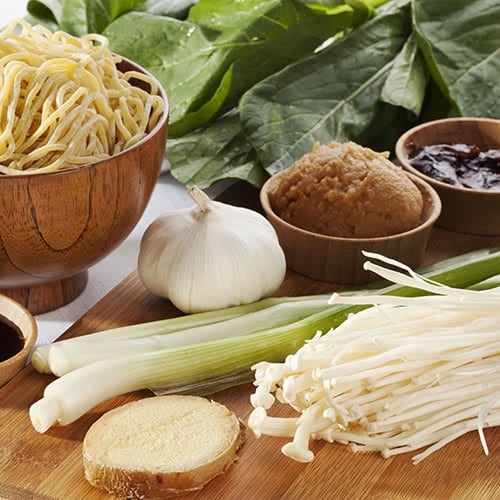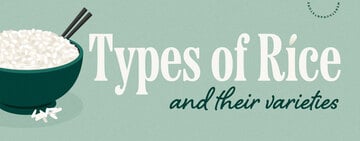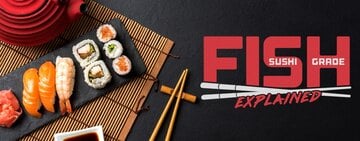Pho vs Ramen: Know Your Noodles
Pho and ramen are both popular noodle dishes, but can you tell the difference between the two? Flavorful broth, filling noodles, and a variety of toppings make these soups very similar. If you’re thinking about adding noodles to your menu, keep reading to learn what makes each dish authentic and unique.
Shop All Noodle BowlsPho vs Ramen
Pho (pronounced fuh) is a light Vietnamese noodle dish with herbal broth and rice noodles, and ramen is a Japanese noodle dish with hearty broth and wheat noodles. If you compare the two soups side by side, the noodles in pho are soft and translucent, and the noodles in ramen are firm and chewy. Pho broth is thin and clear, and ramen broth is usually dark and cloudy.
What is Pho?

Pho is a noodle dish with clear aromatic broth, thinly sliced beef, and rice noodles. A beloved breakfast food in Vietnam, this soup is prepared fresh in the early morning hours and served by street-side restaurants until they run out. You can find pho on the menu any time of day, but pho for breakfast is as common a ritual in Vietnam as cereal for breakfast is in the US.
If you’re trying pho for the first time, you might be surprised at the complexity and depth of flavor in the clear broth. Made from chicken or beef stock, the broth also contains a combination of exotic spices and aromatics that are responsible for the dish’s restorative reputation. Fresh, whole spices like cinnamon, star anise, and peppercorns are used instead of ground spices to keep the broth clear with balanced flavors.
Pho Origin
Vietnam’s favorite dish came into being at the height of French colonialism in the late 19th century. Before the French influence, beef consumption in Vietnam was not common and cows were used mainly as labor animals. The long-term French occupation resulted in a greater demand for beef products and led to an increase in the slaughter of cows. Leftover bones and tough cuts of meat were considered byproducts, but street vendors quickly took advantage and used the beef parts in soups. Pho was born through this intersection of cultures.
Regional Pho

The fascination with pho began in North Vietnam and later spread south during the Vietnam War in 1954. Over 800,000 refugees fled the war-torn north to settle in more affluent areas in the south. This migration led to the evolution of two distinct types of regional pho:
- Pho Bac - This northern pho uses fewer ingredients and is known for a simple broth with a delicate flavor. It’s served with thin slices of rare beef that cook in the hot broth. Garnishes are minimal.
- Pho Nam - When pho came to the south, it became more complex. An abundance of produce in the region led to the addition of garnishes like basil, bean sprouts, and lime. The broth may be seasoned with hoisin and sriracha.
Types of Pho
Besides the regional styles listed above, there are many variations of pho that can be confusing to the uninitiated. Purists will tell you there are only three main types of pho. The short list includes beef (pho bo), chicken (pho ga), and vegetarian (pho chay). If you find pho listed on a menu with pork, shrimp, or octopus, many say it’s not considered authentic pho and is instead a separate noodle dish called hu tieu (pronounced who teeyoo).
Of the three main types, beef pho is the most common and can be customized by ordering different cuts of meat. These are the different variations of pho bo:
- Pho Chin - sliced well-done flank or brisket
- Pho Tai - sliced rare tenderloin or ribeye
- Pho Nam - trimmed flank steak
- Pho Ve Don - untrimmed flank steak
- Pho Gau - fatty brisket
- Pho Gan - beef tendon
- Pho Sach - beef tripe (stomach)
- Pho Vien - beef meatballs
Pho Toppings and Garnishes
One of the key differences between pho and ramen is that you'll see a lot more greenery atop a bowl of pho. These are the common toppings:
- Thai Basil
- Cilantro
- Mint Leaves
- Jalapenos
- Hot Chiles
- Bean Sprouts
- Lime Wedge
What is Ramen?

Ramen is a noodle dish made with rich bone broth, chewy wheat noodles, and sliced pork. It’s commonly topped with a soft-boiled egg and fresh scallions. You’re probably familiar with the packs of instant ramen you can buy at a grocery store and heat up in a microwave, but preparing authentic ramen is a very different experience.
The broth used in fresh ramen noodles requires time to develop the signature flavor that makes this dish so popular. Pork or chicken parts are slow-cooked to break down collagen in the skin and joints, creating a thick, full-bodied bone broth that can’t be achieved with just a packet of dry powder alone.
Origin of Ramen
Ramen is considered a Japanese dish by many because it's such a popular staple food in Japan. There are many theories behind the true origins of this noodle dish, but a common theme prevails. The noodles in ramen are believed to have been introduced by Chinese immigrants in the 1900s, and the broth itself was a Japanese contribution.
Ramen shops began to pop up in Japan after World War II and the dish became entrenched in Japanese culture thereafter. To put it in perspective, there are more ramen shops per square mile in Japan than pizza shops in the US. We do have ramen shops in the states as well, but not nearly as many as Japan.
What is Ramen Made Of?

Ramen noodles are made from wheat flour, water, salt, and a key ingredient called kansui. This mixture of potassium carbonate and sodium carbonate (baking soda) is used to lend a yellowish color and springy, elastic texture to the noodles. Without kansui or a similar alkaline additive, the noodles cannot be considered true ramen noodles.
A typical misconception is that all ramen noodles are curly or wavy. Ramen noodles actually come in a variety of shapes, with the most common type being straight. They can also be classified by their water content, with low water content creating thin, firm noodles and high water content creating thick, soft noodles. No matter the shape, the addition of kansui helps to keep ramen noodles from breaking down in hot broth.
Types of Ramen Broth
The base of ramen broth is made from simmered pork or chicken bones and flavored with the addition of different seasonings. A big part of the allure of ramen is that customers can customize their dish with the broth of their choosing. These are the four broth variations you’ll find in ramen shops:
- Miso Ramen - Miso broth is flavored with miso, a fermented soybean paste with savory, complex flavors.
- Shio Ramen - Shio broth is flavored only with salt.
- Shoyu Ramen - Shoyu broth is flavored with soy sauce, giving it a darker color.
- Tonkotsu Ramen - To make tonkotsu broth, the soup base is simmered longer than usual to create a thick, creamy, pork-flavored dish.
Ramen Toppings
If you’re new to ramen, you may think the more toppings you add the better. Just like toppings on a pizza, choosing the wrong items in the wrong combination can take away from the final dish. This is a list of traditional ramen toppings and the types of broth they complement the most:
- Pork - Slices of pork, called chashu, are used as a topping in all types of ramen.
- Bean Sprouts - Use bean sprouts as a topping in tonkotsu or miso style ramen.
- Eggs - Adding a soft- or hard-boiled egg is common with all types of ramen.
- Scallions - Scallions, or chopped green onions, can be added to all types of ramen broths.
- Fish Cake - Made of white fish paste with a pink swirl in the middle, fish cakes complement shoyu, miso, or shio broth.
- Seaweed - Sheets of seaweed known as nori are added to shoyu and tonkotsu ramen.
- Bamboo Shoots - Preserved bamboo shoots are used in every style of broth.
- Mushrooms - Wood ear and shitake mushrooms are added to all types of ramen.
- Corn - Kernels of sweet corn can be added to all types of broth but are commonly used with miso or shio ramen.
- Butter - Pats of butter add a rich, creamy flavor to miso or shio broth.
Now you should have no trouble telling the difference between pho and ramen. The harder part is deciding which of these noodle dishes is your favorite.



